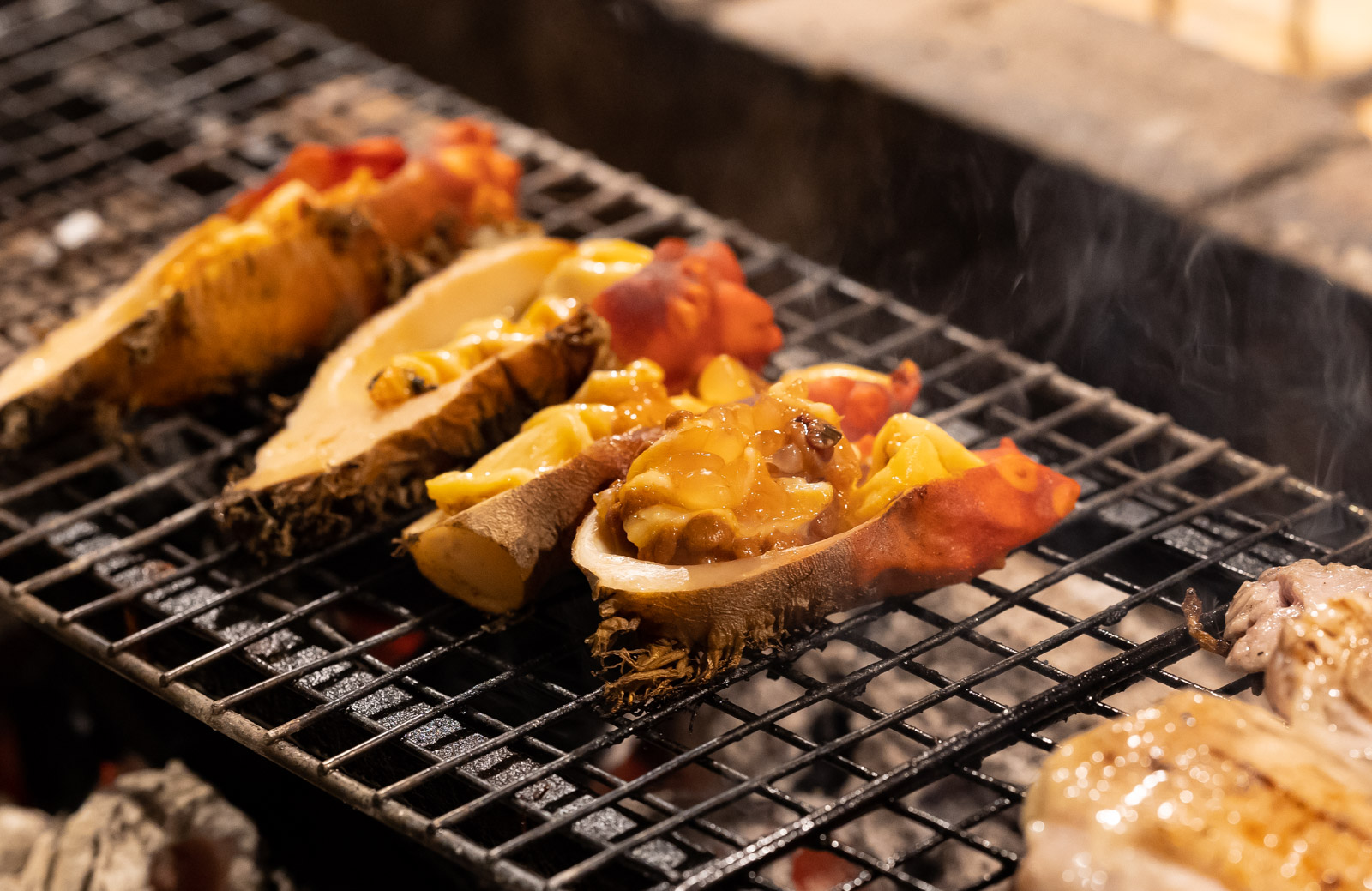
Hoya
The regional delicacy of the Sanriku Coast
Also known as sea pineapples or sea squirts, hoya are a species of tunicate that are native to the Sanriku Coast of Japan. These bright orange tunicates are filter feeders like scallops and oysters and are commercially grown alongside various other mollusks.
With their soft and boldly flavored meat that can be eaten raw or cooked, hoya are served in a variety of ways and can be found in restaurants, bars, and markets across Northern Japan.
Eaten raw, hoya have a soft texture similar to sashimi with a very unique flavor that many describe as retaining the taste of the ocean itself. Eating hoya in this way can be an acquired taste, but many regard this flavor as a perfect match for beer and sake.
Beyond the Sanriku Coast, hoya are also consumed throughout Japan and also in Korea, France, Italy, and Chile.

Aquaculture
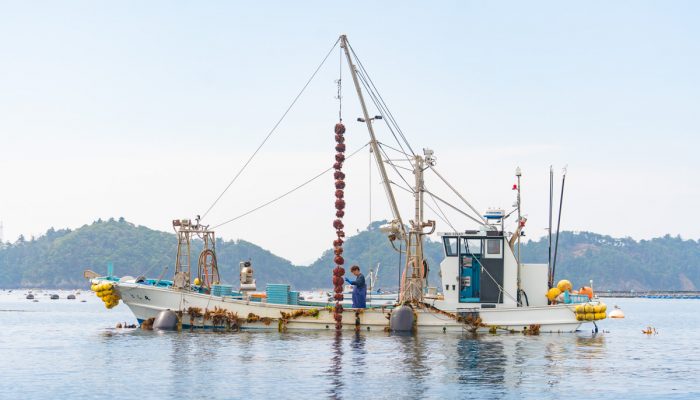
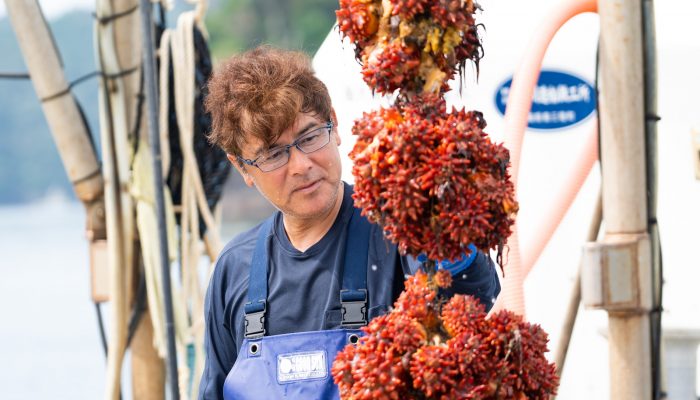
Similar to Yamanaka’s oyster and scallops, hoya are also grown on long ropes hung in the ocean off the coast of Ishinomaki City. These lines hang down 10 meters in depth where ocean currents provide the hoya with rich minerals and plankton to eat. Hoya are filter feeders and are also known as sea squirts due to the large amount of seawater that they constantly cycle through their bodies and squirt out when brought to the surface.
Raising hoya in this way is a special form of aquaculture that was developed here in Ishinomaki City and is unique in that all of the nutrients and needs of these organisms are directly provided by the natural ecosystem of the waters off the Sanriku Coast.
The hoya here are grown for about 3-4 years before harvest and raised largely by independent and local fishermen.
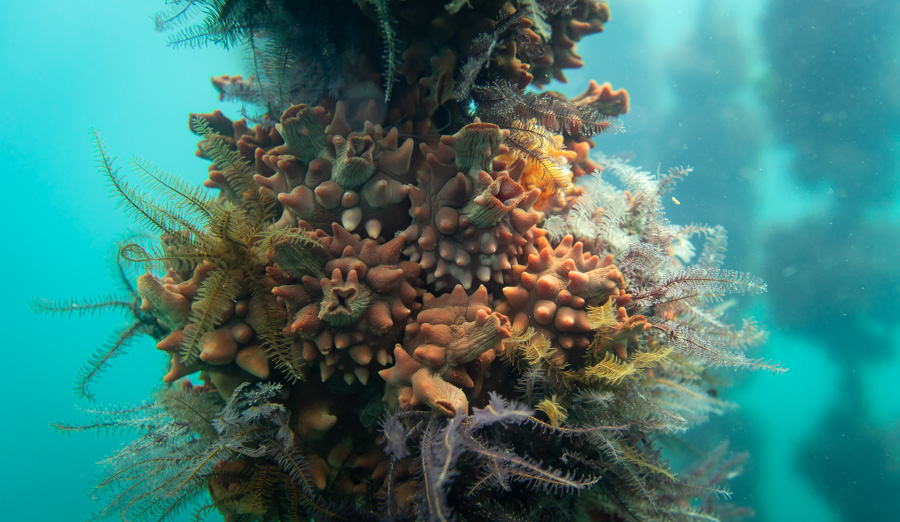
Hoya growing in the Bay of Ishinomaki
Hoya have a hard shell that covers the entirety of their body and often grow in large colonies on the ocean floor. A plethora of other sea life such as brittle stars and fish also thrive in the ecosystem that the hoya colonies on these farms provide. Note that the cloudy waters of Ishinomaki are a result of the rich minerals that wash off of the rocky cliffs that border the shoreline and the ocean current that brings rich nutrients and plankton to these waters.
Processing
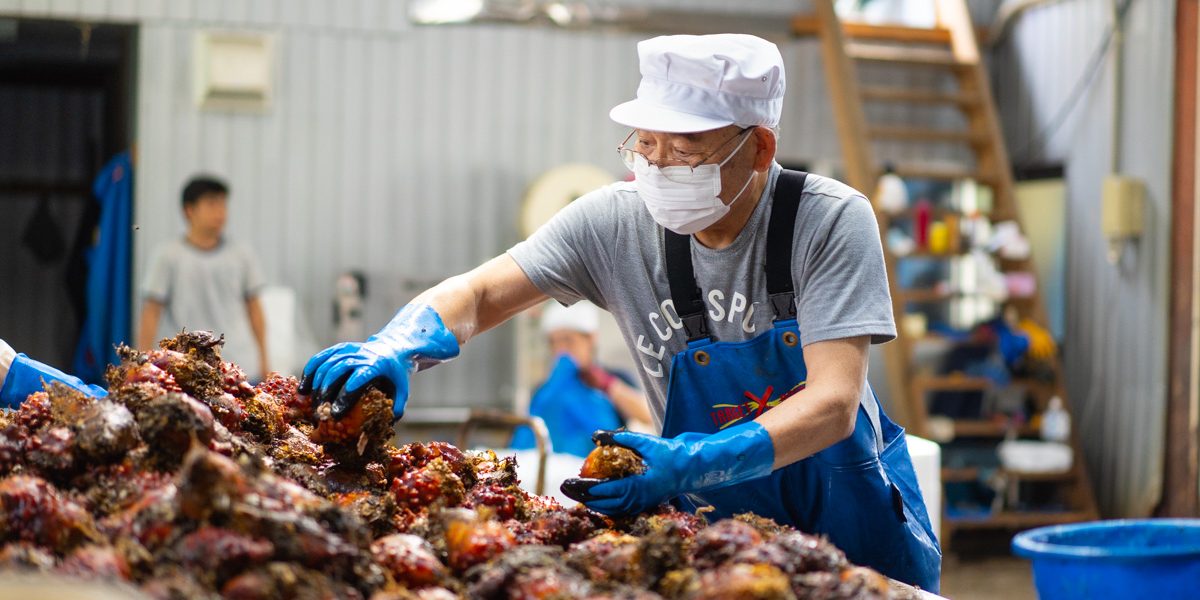
Yamanka’s hoya are all locally sourced from fishermen in Ishinomaki City. Immediately upon harvest they are brought into our processing and distribution centers where each hoya is inspected and prepared by hand. Hoya are commonly packaged and shipped whole to be eaten raw across Japan and abroad. This helps the hoya retain their freshness and are prepared by chefs on order. They also have their hard shells removed and are prepared into sashimi here for shipping within packages and for further processing such as marination, smoking, and grilling.
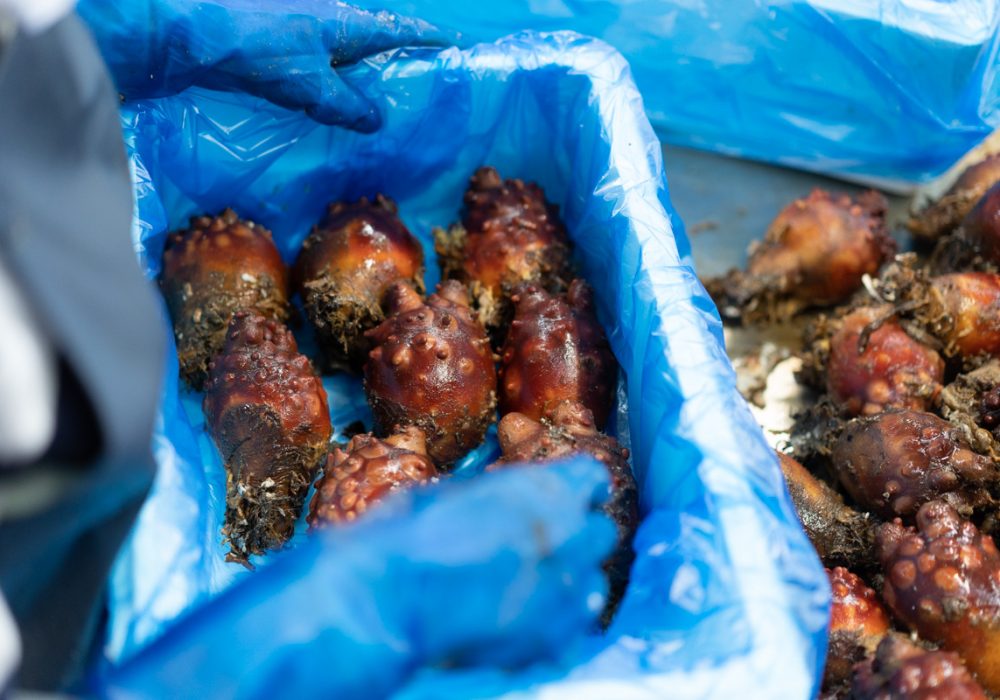
Hoya packaged whole and prepared to be chilled and shipped.
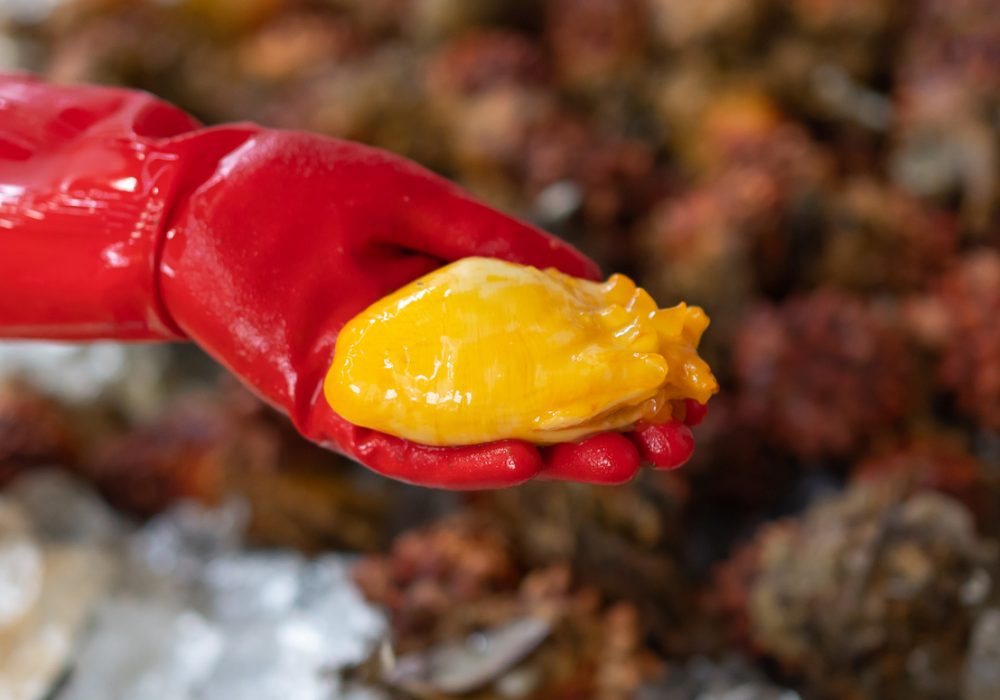
A hoya with its outer shell removed.
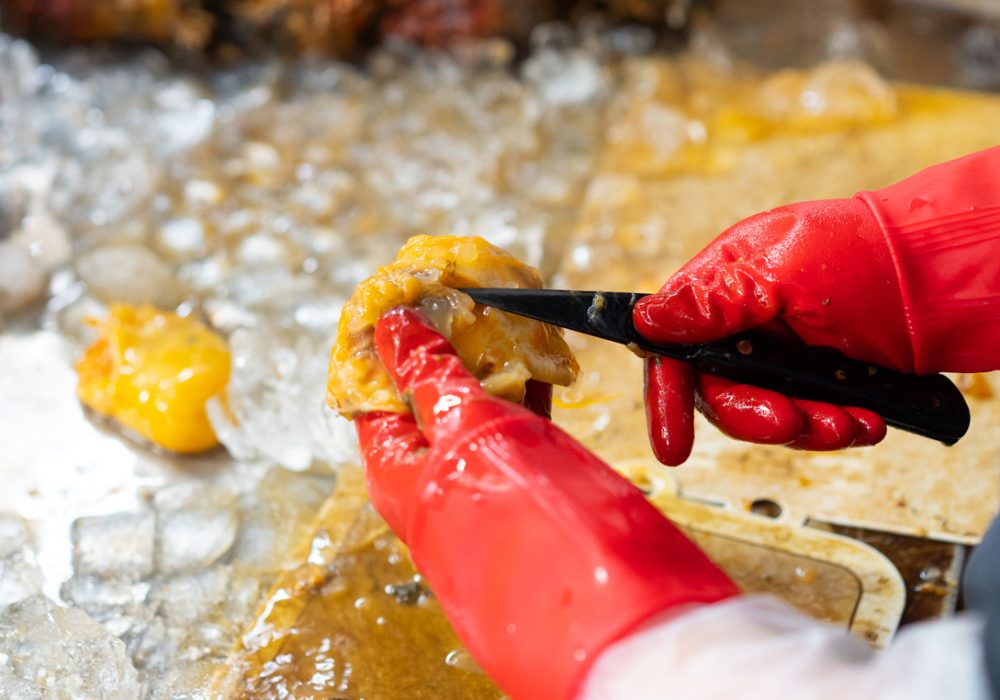
Hoya gutted and ready for packaging and further processing.
How to Enjoy Hoya
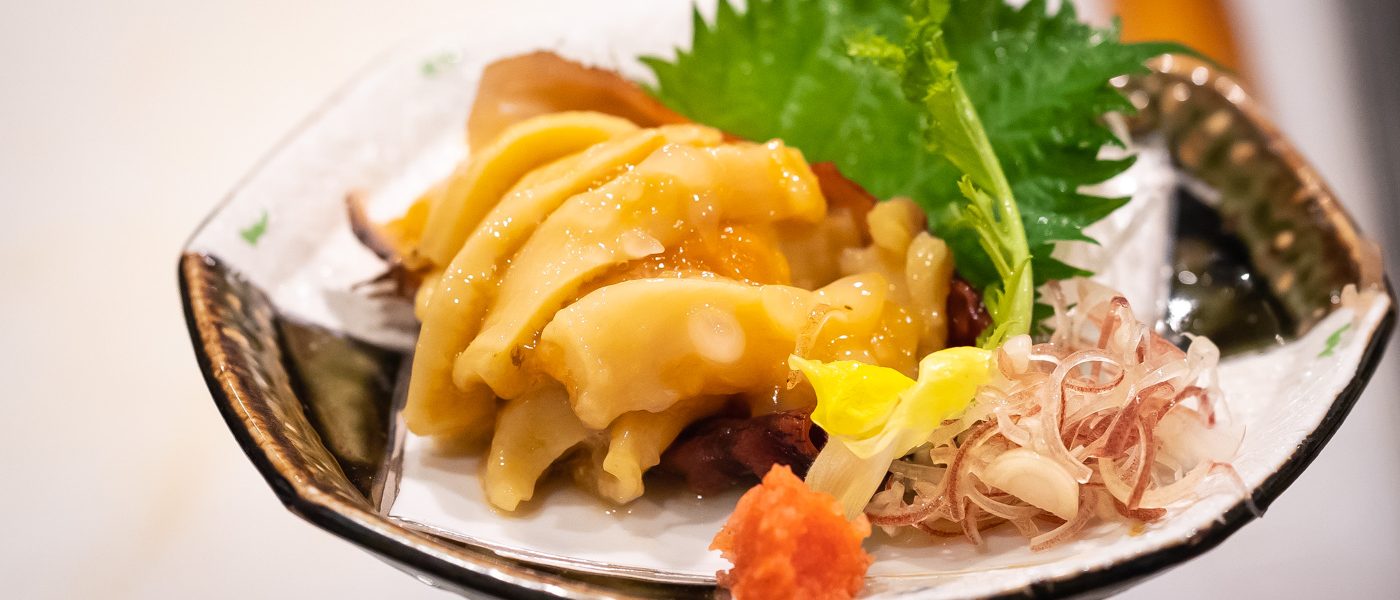
The most popular method of eating hoya in Northern Japan is to have it prepared as sashimi and eaten raw. When consumed in this way, hoya have a very unique and distinctive flavor that is said to retain the flavor of the ocean itself. Hoya sashimi also pairs well with sake and beer and is a staple item in bars and izakaya around Ishinomaki and Japan.
Hoya is also a very versatile ingredient and can be prepared in many other ways. This includes grilling, marinating, and smoking just to name a few.
In Korea, hoya are also commonly eaten with kimchee and integrated into a variety of dishes.
